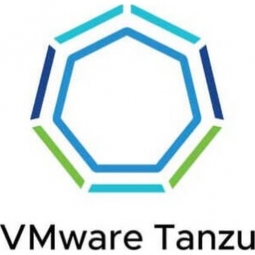
Technology Category
- Application Infrastructure & Middleware - Event-Driven Application
- Platform as a Service (PaaS) - Application Development Platforms
Applicable Industries
- Glass
- Telecommunications
Applicable Functions
- Maintenance
- Product Research & Development
Use Cases
- Tamper Detection
- Traffic Monitoring
Services
- Cloud Planning, Design & Implementation Services
- System Integration
The Customer
VMware, Inc.
About The Customer
VMware is a global leader in cloud infrastructure and digital workspace technology, accelerating digital transformation for evolving IT environments. The company's software spans compute, cloud, networking and security, and digital workspace. One of the apps modernized was VMware Customer Connect, a self-service portal that millions of users access each month to evaluate products, download software binaries, manage software licenses, request support, and conduct account management. The portal is crucial for VMware's customer service and experience, and its performance directly impacts the company's reputation and customer satisfaction.
The Challenge
VMware was undergoing a significant digital transformation to support its business model transition from perpetual-license software to subscription and software-as-a-service (SaaS). The VMware IT team was tasked with delivering new capabilities in an accelerated timeframe while improving performance, resiliency, and user experience. One of the apps modernized was VMware Customer Connect, a self-service portal accessed by millions of users each month. Since its launch a decade ago, the portal experienced exponential growth in traffic, leading to scalability and performance issues, outages, and latency. Its legacy codebase and monolithic architecture made it difficult to build and deliver new features. To enhance the platform’s performance and security in the short term, VMware added third-party software tools. However, a lack of integration and other inconsistencies added to the platform's complexity.
The Solution
VMware IT’s architecture team evaluated VMware Tanzu, a suite of products and solutions for building and running modern apps. It enables developers to deploy modern apps faster into a stable, scalable runtime environment and helps operations teams handle change requests related to design, log aggregation, and configuration monitoring more efficiently. VMware IT rearchitected VMware Customer Connect with lightweight microservices, built and delivered using the Spring Boot open source Java framework and VMware Tanzu Application Service. A single-page application framework using open source, Clarity-based UI design was used to improve navigation for end users of the portal, while leveraging microservices hosted on VMware datacenters to achieve higher resiliency. By adopting an event-driven architecture and decoupling services to operate independently, the VMware Customer Connect team was able to accelerate the delivery of new features, strengthen resiliency, and improve performance and response times.
Operational Impact
Quantitative Benefit

Case Study missing?
Start adding your own!
Register with your work email and create a new case study profile for your business.
Related Case Studies.

Case Study
Vodafone Hosted On AWS
Vodafone found that traffic for the applications peak during the four-month period when the international cricket season is at its height in Australia. During the 2011/2012 cricket season, 700,000 consumers downloaded the Cricket Live Australia application. Vodafone needed to be able to meet customer demand, but didn’t want to invest in additional resources that would be underutilized during cricket’s off-season.

Case Study
SKT, Construction of Smart Office Environment
SK T-Tower is the headquarters of SK Telecom. Inside the building, different types of mobile devices, such as laptops, smartphones and tablets, are in use, and with the increase in WLAN traffic and the use of quality multimedia data, the volume of wireless data sees an explosive growth. Users want limitless Internet access in various places in addition to designated areas.







